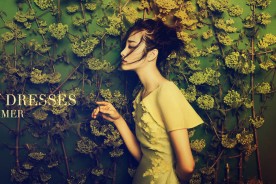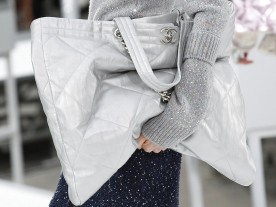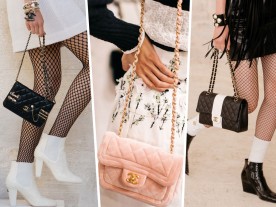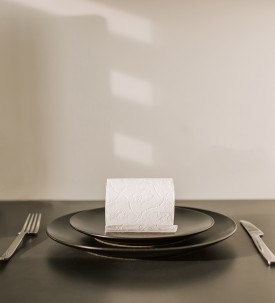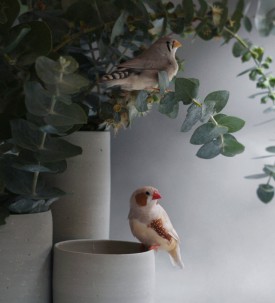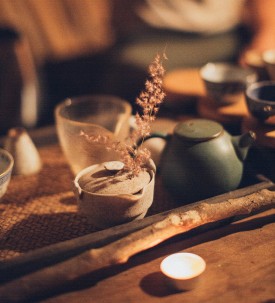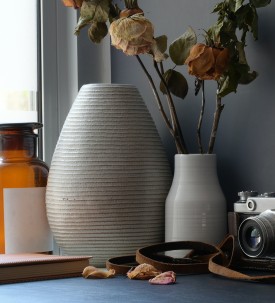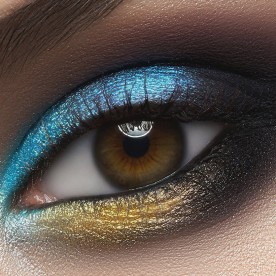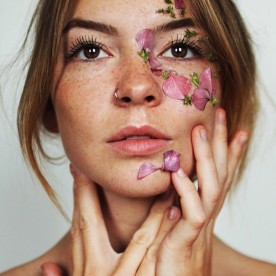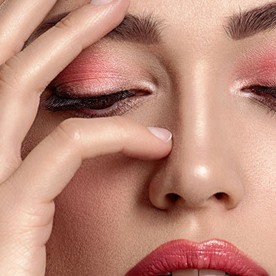Blog
-
Jun 15 2021
Thrifting, Estate Sales & More
Categories: Fashion VintageWhen it comes to shopping, 95% of the time I shop secondhand and vintage. The other 5%, I’ll shop a new piece that’s sustainably made and can highlight my current wardrobe and give it a bit of a refresh. With this in mind, it’s a passion of mine to peruse and shop vintage on a weekly basis. No matter if it’s online or in store, finding a one-of-a-kind piece or something I’ve been on the hunt for is an accomplishment I relish.
Flea Markets
If you follow me on stories, you know my favorite way to shop clothing is at a flea market. It’s my own meditation to go browse the different tents and sections of these markets, hoping to find something on my list or my next great deal. A lot of people get overwhelmed by them, which I can totally understand, but the key is to be organized. Know what you’re shopping for, have a budget, and set a time limit for yourself (quite frankly, a game changer to shopping… just ask my husband). I set out a few of my favorite tips when it comes to mastering the art of shopping flea markets here as well as the Rose Bowl Flea Market here. Whatever market you’re headed to, they’re always worth a walk through, if nothing else.
Thrift Stores
Thrift stores are great for rainy days when you can walk in and take your time perusing the racks. They require more digging, as they often are not as ‘curated’ as other platforms, but we all know this is when you can find diamonds in the rough. Salvation Army and Goodwill can be priced quite low, so you can get a lot of bang for your buck. Other higher end thrift stores will still provide a discount and you’ll be saving the Earth from waste, but you’ll find a higher ticket price more often than not. There are certain items I always
-
Jun 15 2021
How to Shop for Vintage Online
Categories: Fashion VintageContrary to popular belief, shopping online takes a lot of skill. Different platforms, and even what you’re shopping for, will require different techniques and that’s what makes the art of online shopping fun (especially with millions of items to sift through). That’s why I’m your vintage BFF and source for finding those gems!
If you follow along on Instagram, you may know that two of my favorite ways to shop vintage clothing and decor is through eBay and Etsy. Many times when I share my finds, I’m asked how I sourced it and more often than not, get asked my tips for shopping on the two platforms. Keep scrolling for my tips and techniques on what and how to buy to score the best vintage the inter-webs have to offer.
TIPS AND TRICKS FOR SHOPPING ON EBAY AND ETSY
Take your time – The thing about having the luxury of looking at items online means that you’re also up against thousands of other people doing the same thing. Try not to buy things out of desperation to get them and take your time to make sure it’s what you want. Once you take the time and your dream item becomes available, you’ll know and you’ll have done the due diligence to feel confident pushing ‘add to cart.’ It’s always great to start with a list of items or trends you’re shopping and sticking to that to find that special piece.
Get specific – If you know what you’re looking for, the best thing you can do is get as specific about it as possibl
-
Jun 08 2021
The Vintage St John Cardigan You Need
Categories: Fashion VintageMuch like any vintage lover, I’ve been wanting a vintage Chanel cardigan or jacket forever, but I’m not ready to drop $1.5k on one. Yes, I buy a lot of designer stuff and I have expensive taste, but there are some things that I just can’t justify. Enter the classic vintage St John cardigan which will solve the dilemma (if not affording Chanel is a dilemma).
I picked up my vintage St John cardigan for under $15 on eBay a few months ago and it’s one of my favorite finds ever. It’s one of those classic pieces I’ll wear well into my 100s, yes I plan to live to at least 100 years old, and will still be in style. These cardigans can tend to look a little too “buttoned up, pearl necklace” for my taste, but styled with the right pieces, it’s super modern and fashion forward. I love the contrast trim and the extra gaudy buttons which make the sweaters extra special.
My formula is to style with vintage Levi’s or leather pants and a graphic tee. It makes for a great cardigan over dresses for a most classic look, but you know I love mixing everything up when I get dressed up.
Shop my vintage St John cardigan finds:
-
Categories: HandbagLast week our favorite celebs were spotted out and about enjoying the spring weather with some pretty enviable bags—both new and old! Along with some of our other sightings, Hailey Bieber made a case for color as she stepped out with Bottega Veneta's newest bag, The Point. Her matching tweed set is also Bottega, naturally.
-
May 07 2021
Does This Bag Look Too Big on Me?
Categories: Handbag“What about you? Do you hate big bags, love them, somewhere in the middle? For clarification, I’m not talking about a big bag for work or travel. I mean to carry to a lunch date or a day shopping, etc. To carry it for the style of it, not necessarily b/c you need to carry a ton of stuff.”
-
Categories: Handbag
Nobody does a show better than Chanel, and this year the brand is back for Cruise 2022
-
Apr 11 2021
Detailed info on the Clay Bodies
Categories: CeramicsAll clays except terra cotta and sculpture are recommended for wheel.
Sand Clay. A finely grogged clay. This clay is beautiful, it looks like wet beach sand when left unglazed with a grainy, speckled surface. The speckles do not show through glazes and underglazes applied over this clay body but it will bring the color of glazes down.
Cone 6 Shrinkage 13.5% Absorption 3.0%Brooklyn red. Standard 308.
This is one of the most widely used clays in public studios for a reason. It is a brick red stoneware body with fine sand and fine grog. Very resistant to warping and bloating. Yields a beautiful dark reddish brick color and can bring depth and richness to the glazes applied to it.
Cone 6 Shrinkage 12.5% Absorption 2.0%Dark Brown Clay.
People love this clay because it is so dark. This clay creates major depth and richness in color as it greatly affects the glazes applied over it. The clay is smooth and plastic and good for all techniques. It may take longer to clean up your wheel splash pan with all the iron in this clay.
Cone 6 Shrinkage 13% Absorption 1.0%Porcelain. Wins most vitrified award meaning that this clay is nonporous and very food safe even without glaze. Porcelain boasts a super smooth and creamy texture and contains no grog. Glazes are bright and brilliant on this clay especially semi translucent glazes like celadons. Its a great choice if you are staining clay bodies with mason stains or oxides (Nerikomi/Agateware). It is however more prone to cracking while drying and warping than other clays but worth it to obtain the super white color. Recommended for intermediate to experienced potters.
Cone 6 Shrinkage 13.0% Absorption 0.3%White Stoneware. Fires a bright warm off-white color. This is a good clay for beginners because the glazes show up on it with very bright colors. This clay has some of the finest grog we have ever seen which enhances its throwing
-
Apr 11 2021
Pigd's final three classes
Categories: CeramicsLast Friday’s Zoom topic is on for today. Betty Woodman!
Born in Norwalk, Connecticut, Betty Woodman attended the School for American Craftsmen at Alfred University in New York from 1948 to 1950. She has taught in the Fine Arts Department of the University of Colorado.
A leading ceramist whose inventive forms and painterly use of color have won her international renown, Woodman began her career making simple functional pottery. Although her ambitious experiments with clay have wrought great changes in her work, it still refers to some practical function even if her baroque, expressive forms are no longer strictly utilitarian. Woodman's art has been inspired by diverse sources, ranging from Etruscan and Minoa to Tange and majolica ceramics.
The recipient of fellowships from the National Endowment for the Arts in 1980 and 1986, Woodman has also been a guest artist at the experimental atelier of the Manufacture National de Sevres in France.
Kenneth R. Trapp and Howard Risatti Skilled Work: American Craft in the Renwick Gallery (Washington, D.C.: National Museum of American Art with the Smithsonian Institution Press, 1998)
Artist Biography
Betty Woodman first became interested in crafts because her father was a woodworker. In high school, one ceramics course was sufficient to convince Woodman that she wanted to be a functional potter. Studying pottery at the School for American Craftsmen at Alfred University, she developed a strong interest in the history of ceramics. Her first job after graduating in 1950 was as a production potter, and that technical facility and experience were to be the foundation of her subsequent innovations. In 1952 Woodman traveled to Italy, where exposure to traditions such as majolica opened her eyes to the potential of clay.
It was not until the seventies that Woodman completely abandoned h
-
Apr 11 2021
How to plant your living pot
Categories: Ceramics551
Cone 6 White porcelain. Wins most vitrified award. Super smooth and creamy. Glazes are bright and brilliant on this clay. Great if you are staining clay bodies with mason stains or oxides (Nerikomi/Agateware).
Cone 6 Shrinkage 13.0% Absorption 0.3%630
Gray (White) Stoneware. This is the clay we used to provide in the communal buckets. Contains fire clay and mullite which (supposedly) enhances thermal properties. Fires grayish and the fired unglazed clay looks like white stoneware at cone ten. This is a good clay for beginners because the grog in the clay helps prevent cracking during drying. Some people have experienced bloating issues with this clay body.Cone 6 Shrinkage 13.0% Absorption 1.5%
240
Ivory (White) Stoneware.
A very smooth, plastic throwing body. This clay doesn’t have grog so it is more prone to cracking during drying, dry slowly to avoid this, not having grog allows you to sponge smooth this clay. 240 is a great clay for those who are nervous about trying porcelain but want a very smooth lighter colored clay. It is the brightest stoneware we have, it is very low in iron. The glazes show bright and clean on this clay.
Cone 6 Shrinkage 13.0% Absorption 1.5%420
Sculpture clay.
A highly grogged body, formulated for sculpture. Sand color at C/6.
This clay is a beautiful gray color when wet but don’t let that fool you, the clay fires a light straw tone. This clay is full of sandy gritty grog which can hurt some peoples hands when they throw with it. For this reason we do not recommend it for throwing (although some do). This clay is highly moldable and sticky. It is an excellent sculpture clay, producing works that dry evenly with less cracking and low shrinkage (only 8% vs the usual double digits).
Cone 6 Shrinkage 8.0% Absorption 1.5%259
Lite Brown Clay
a beautiful clay that is great for throwing. This clay is -
Apr 11 2021
Info on Firings at Mouse
Categories: CeramicsMouse Ceramic Studio is currently offering firing services to all. We charge $0.04 per cubic inch to fire in a community firing. (Except for members), each time the work is fired, it must be paid for. Measure your piece with an inch ruler or measuring tape, you will need the length, the width, and the height, the length is the longest dimension of your piece (usually) from side to side, the width is usually front to back, and the height is the measurement from top to bottom or how tall it is. Each measurement needs to multiplied by the next so length x width x height. This will give you the cubic inches of the piece; take that amount and multiply by 0.04 to get your dollar amount. For example, a cup with handle that is 6x4x4 is 96 cubic inches; 96 x 0.04 = 3.84 so the total for this mug would be $3.84 per firing or $7.68 for bisque and glaze firing. Members only pay for bisque firings and glaze is included as a courtesy and benefit of membership.


